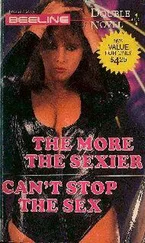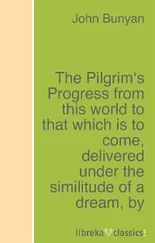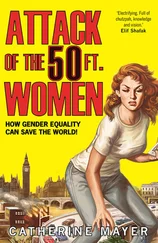16. “People who pass us on the street”: Hazel Rawson Cades, “A Twelve-to-Twenty Talk,” Women’s Home Companion , September 1925: 71 (cited by Haiken, p. 91).
17. Americans became obsessed with movie stars: In 1907 there were five thousand movie theaters in the United States; by 1914 there were 180,000 theaters and counting. The first films appeared in 1894, and though the identities of screen actors were originally kept secret by the film studios (in keeping with the ethos of a more private era), by 1910 the notion of a “movie star” was born. Between 1910 and 1915 the influential filmmaker D. W. Griffith made movies in which he juxtaposed close-ups of the stars with crowd scenes. His message was clear: here was the successful personality, standing out in all its glory against the undifferentiated nobodies of the world. Americans absorbed these messages enthusiastically. The vast majority of biographical profiles published in The Saturday Evening Post and Collier’s at the dawn of the twentieth century were about politicians, businessmen, and professionals. But by the 1920s and 1930s, most profiles were written about entertainers like Gloria Swanson and Charlie Chaplin. (See Susman and Henderson; see also Charles Musser, The Emergence of Cinema: The American Screen to 1907 [Berkeley: University of California Press, 1994], 81; and Daniel Czitrom, Media and the American Mind: From Morse to McLuhan [Chapel Hill: University of North Carolina Press, 1982, p. 42].)
18. “EATON’S HIGHLAND LINEN”: Marchand, Advertising the American Dream , 11.
19. “ALL AROUND YOU PEOPLE ARE JUDGING YOU SILENTLY”: Jennifer Scanlon, Inarticulate Longings: The Ladies’ Home Journal, Gender, and the Promises of Consumer Culture (Routledge, 1995), 209.
20. “CRITICAL EYES ARE SIZING YOU UP RIGHT NOW”: Marchand, Advertising the American Dream , 213.
21. “EVER TRIED SELLING YOURSELF TO YOU?”: Marchand, 209.
22. “LET YOUR FACE REFLECT CONFIDENCE, NOT WORRY!”: Marchand, Advertising the American Dream , 213.
23. “longed to be successful, gay, triumphant”: This ad ran in Cosmopolitan , August 1921: 24.
24. “How can I make myself more popular?”: Rita Barnard, The Great Depression and the Culture of Abundance: Kenneth Fearing, Nathanael West, and Mass Culture in the 1930s (Cambridge, UK: Cambridge University Press, 1995), 188. See also Marchand, Advertising the American Dream , 210.
25.– both genders displayed some reserve … sometimes called “frigid”: Patricia 26 A. McDaniel, Shrinking Violets and Caspar Milquetoasts: Shyness, Power, and Intimacy in the United States, 1950–1995 (New York: New York University Press, 2003), 33–43.
26. In the 1920s an influential psychologist … “Our current civilization … seems to place a premium upon the aggressive person”: Nicholson, “Gordon Allport, Character, and the Culture of Personality, 1897–1937,” 52–68. See also Gordon Allport, “A Test for Ascendance-Submission,” Journal of Abnormal & Social Psychology 23 (1928): 118–36. Allport, often referred to as a founding figure of personality psychology, published “Personality Traits: Their Classification and Measurement” in 1921, the same year Jung published Psychological Types . He began teaching his course “Personality: Its Psychological and Social Aspects” at Harvard University in 1924; it was probably the first course in personality ever taught in the United States.
27. Jung himself … “all the current prejudices against this type”: C. G. Jung, Psychological Types (Princeton, NJ: Princeton University Press, 1990; reprint of 1921 edition), 403–5.
28.– The IC, as it became known … “the backbone along with it”: Haiken, 27 Venus Envy , 111–14.
29. Despite the hopeful tone of this piece … “A healthy personality for every child”: McDaniel, Shrinking Violets , 43–44.
30. Well-meaning parents … agreed: Encyclopedia of Children and Childhood in History and Society: “Shyness,” http://www.faqs.org/childhood/Re-So/Shyness.html.
31. Some discouraged their children … learning to socialize: David Riesman, The Lonely Crowd (Garden City, NY: Doubleday Anchor, reprinted by arrangement with Yale University Press, 1953), esp. 79–85 and 91. See also “The People: Freedom—New Style,” Time , September 27, 1954.
32. Introverted children … “suburban abnormalities”: William H. Whyte, The Organization Man (New York: Simon & Schuster, 1956; reprint, Philadelphia: University of Pennsylvania Press, 2002), 382, 384.
33. Harvard’s provost Paul Buck: Jerome Karabel, The Chosen: The Hidden History of Admission and Exclusion at Harvard, Yale, and Princeton (Boston: Houghton Mifflin, 2005), 185, 223.
34. “ ‘We see little use for the “brilliant” introvert’ ”: Whyte, The Organization Man , 105.
35. This college dean … “it helps if they make a good impression”: Whyte, The Organization Man , 212.
36. “We’re selling, just selling, IBM”: Hank Whittemore, “IBM in Westchester—The Low Profile of the True Believers.” New York , May 22, 1972. The singing ended in the 1950s, according to this article. For the full words to “Selling IBM,” see http://www.digibarn.com/collections/songs/ibm-songs.
37. The rest of the organization men … read the Equanil ad: Louis Menand, “Head Case: Can Psychiatry Be a Science?” The New Yorker , March 1, 2010.
38. The 1960s tranquilizer Serentil: Elliott, Better Than Well , xv.
39. Extroversion is in our DNA: Kenneth R. Olson, “Why Do Geographic Differences Exist in the Worldwide Distribution of Extraversion and Openness to Experience? The History of Human Emigration as an Explanation,” Individual Differences Research 5, no. 4 (2007): 275–88. See also Chuansheng Chen, “Population Migration and the Variation of Dopamine D4 Receptor (DRD4) Allele Frequencies Around the Globe,” Evolution and Human Behavior 20 (1999): 309–24.
40. the Romans, for whom the worst possible punishment: Mihalyi Csikszentmihalyi, Flow: The Psychology of Optimal Experience (New York: Harper Perennial, 1990), 165.
41. Even the Christianity of early American religious revivals: Long before that silver-tongued Chautauqua speaker turned Dale Carnegie’s world upside down, religious revivals were taking place under huge tents all over the country. Chautauqua itself was inspired by these “Great Awakenings,” the first in the 1730s and 1740s, and the second in the early decades of the nineteenth century. The Christianity on offer in the Awakenings was new and theatrical; its leaders were sales-oriented, focused on packing followers under their great tents. Ministers’ reputations depended on how exuberant they were in speech and gesture.
The star system dominated Christianity long before the concept of movie stars even existed. The dominant evangelist of the First Great Awakening was a British showman named George Whitefield who drew standing-room-only crowds with his dramatic impersonations of biblical figures and unabashed weeping, shouting, and crying out. But where the First Great Awakening balanced drama with intellect and gave birth to universities like Princeton and Dartmouth, the Second Great Awakening was even more personality-driven; its leaders focused purely on drawing crowds. Believing, as many megachurch pastors do today, that too academic an approach would fail to pack tents, many evangelical leaders gave up on intellectual values altogether and embraced their roles as salesmen and entertainers. “My theology! I didn’t know I had any!” exclaimed the nineteenth-century evangelist D. L. Moody.
Читать дальше
![Сьюзан Кейн Quiet [The Power of Introverts in a World That Can't Stop Talking] обложка книги](/books/33084/syuzan-kejn-quiet-the-power-of-introverts-in-a-wo-cover.webp)











